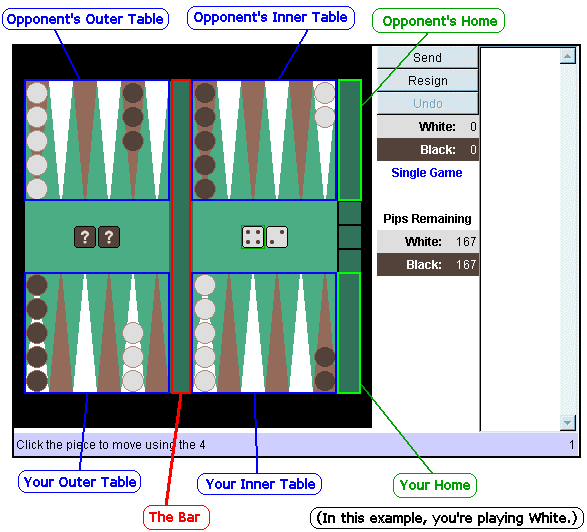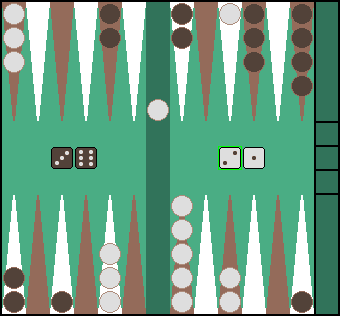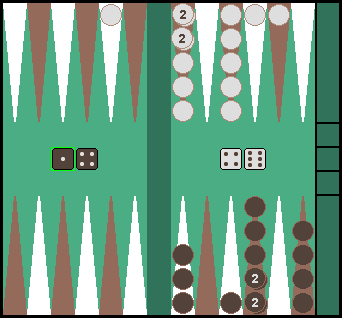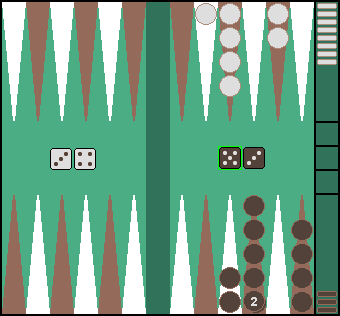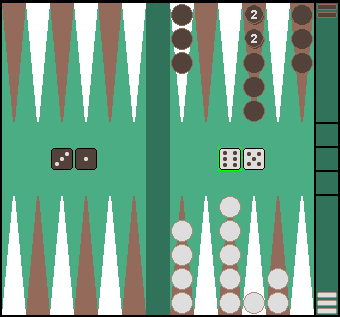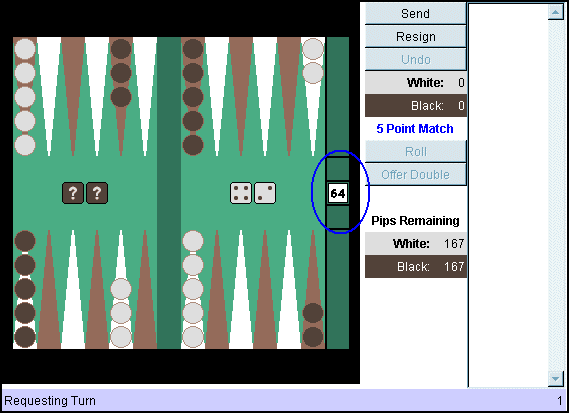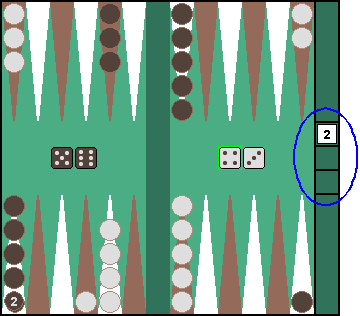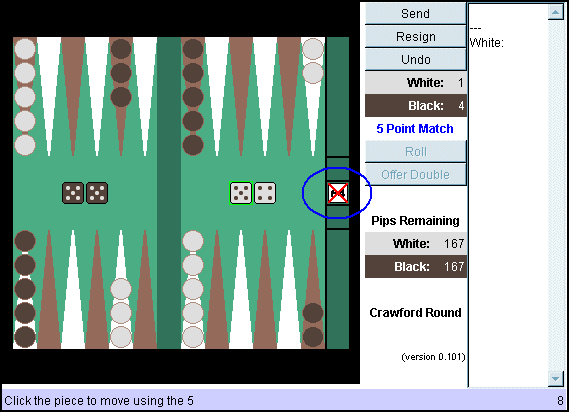|
Backgammon Help | |||||||||||
DescriptionInstructionsObjectiveTo get all of your pieces home before your opponent does.Quick Summary for Experienced Players
Rules
Match PlayIn match play, you're playing a series of games to an agreed ending score -- e.g., a match of five points, a match of nine points, a match of 21 points. You win a point by winning a game. There are also situations where you can earn more than one point for winning a game. This section describes match play.
|
| • | • | |||
 |
• |
|
||

